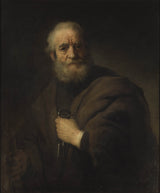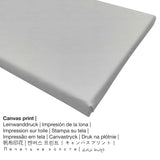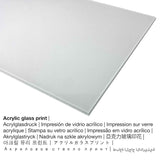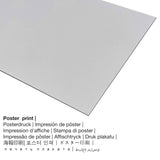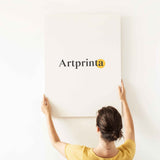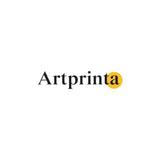Rembrandt van Rijn, 1632 - St Peter - mbipụta nka mara mma
Ụtụ gụnyere. Mbupu gbakọrọ na ndenye ọpụpụ.
Overview
N'elu 380 years old painting was painted by the male painter Rembrandt van Rijn na 1632. The mbụ tụrụ nha: Ogologo: 82 cm (32,2 ″); Obosara: 62 cm (24,4 ″) Ekebere: Elu: 106 cm (41,7 ″); Obosara: 93 cm (36,6 ″); Omimi: 11 cm (4,3 ″). Ọ bụ akụkụ nke mkpokọta nka dijitalụ nke National Museum nke Stockholm, nke bụ Sweden ngosi nka nka na imewe, a Swedish ọchịchị ikike na a mandatet o chekwa omenala nketa na-akwalite art, mmasị nka na ihe ọmụma nka. Site n'ikike nke: Nationalmuseum Stockholm na Wikimedia Commons (ikike ngalaba ọha).Akụkọ nke ọrụ nka bụ ihe ndị a: . Ọzọkwa, itinye n'usoro mmepụta dijitalụ dị Eserese usoro na nwere ihe oyiyi ruru nke 1: 1.2, which implies that the length is 20% shorter than the width. The painter Rembrandt van Rijn was a European artist, whose artistic style can be attributed primarily to Baroque. The Baroque artist lived for a total of 63 years, born in the year 1606 na Leiden ma nwụọ na 1669 na Amsterdam.
Họrọ ụdị ihe onwunwe gị
Maka mbipụta nka ọ bụla anyị na-enye nha & ihe dị iche iche. Nhọrọ ndị a dị maka n'otu n'otu:
- Bipụta na iko acrylic na-egbuke egbuke: An acrylic glass print, which is often denoted as a plexiglass print, will change your favorite original into lovely home decoration. The plexiglass with real glass coating protects your chosen art print against sunlight and heat for decades.
- Mbipụta nke aluminom: This is a metal print manufactured on aluminium dibond with an impressive depth effect. The non-reflective surface make a contemporary impression. The white & bright sections of the artwork shimmer with a silky gloss, however without the glow. Colors are bright and luminous in the highest definition, details are clear and crisp.
- Kwaaji: A printed canvas mounted on a wooden stretcher frame. A canvas produces a familiar, comfortable appearance. A canvas print of your favorite artwork will provide you with the unique opportunity of transforming your very own fine art print into a large size collection piece like you would see in a gallery. The advantage of canvas prints is that they are relatively low in weight, meaning that it is quite simple to hang up your Canvas print without any wall-mounts. Canvas prints are suited for any type of wall.
- Poster (akwa akwa akwa): The poster is a UV printed sheet of flat canvas paper with a fine finish on the surface. Please bear in mind, that depending on the absolute size of the poster print we add a white margin of approximately 2-6cm around the print motif, which facilitates the framing.
Ihe dị mkpa: We do what we can to describe the art products in as much detail as possible and to demonstrate them visually on the different product detail pages. Still, the tone of the printed materials and the printing might vary to a certain extent from the representation on your device's screen. Depending on your settings of your screen and the condition of the surface, not all colors can be printed one hundret percent realistically. Bearing in mind that our are processed and printed manually, there may as well be slight variations in the motif's exact position and the size.
Ozi ngwaahịa ahaziri
| Nkewa edemede: | ezi nka mmeputakwa |
| Usoro mmeputakwa: | dijitalụ mmeputakwa |
| Usoro nhazi: | mbipụta dijitalụ (Mbipụta UV ozugbo) |
| Production: | German mmepụta |
| Ụdị ngwaahịa: | mmepụta ihe na-achọ |
| A na-atụ aro iji ngwaahịa eme ihe: | ime ụlọ, ihe ndozi mgbidi |
| Ndozi onyonyo: | usoro eserese |
| Njikwa oyiyi: | 1: 1.2 ogologo ruo obosara |
| Oke akụkụ pụtara: | ogologo bụ 20% mkpụmkpụ karịa obosara |
| Nhọrọ ihe dị: | akwụkwọ mmado (akwụkwọ kwaaji), mbipụta enyo acrylic (nke nwere ezigbo mkpuchi iko), mbipụta ọla (aluminium dibond), mbipụta kwaaji |
| Nhọrọ nke Canvas Mbipụta (akwa akwa na etiti ihe ndọtị): | 50x60cm - 20x24", 100x120cm - 39x47", 150x180cm - 59x71" |
| Acrylic glass print (nwere ezigbo mkpuchi iko) nhọrọ: | 50x60cm - 20x24", 100x120cm - 39x47" |
| Mpempe akwụkwọ mmado (akwụkwọ kwaaji) nha dị iche iche: | 50x60cm - 20x24", 100x120cm - 39x47" |
| Aluminium dibond ebipụta (ihe aluminium) nha dị iche iche: | 50x60cm - 20x24", 100x120cm - 39x47" |
| ụba: | agunyeghi |
Iberibe ozi ndabere nka
| Aha nke ọrụ nka: | "St Peter" |
| nhazi ọkwa: | sere |
| Otu sara mbara: | nka ochie |
| oge: | 17th narị afọ |
| Afọ nka: | 1632 |
| Afọ nka: | ihe karịrị afọ 380 |
| Nha izizi nka: | Ogologo: 82 cm (32,2 ″); Obosara: 62 cm (24,4 ″) Ekebere: Elu: 106 cm (41,7 ″); Obosara: 93 cm (36,6 ″); Omimi: 11 cm (4,3 ″) |
| Ụlọ ihe ngosi nka: | National Museum nke Stockholm |
| Ebe ngosi nka: | Stockholm, Obodo Stockholm, Sweden |
| website: | www.nationalmuseum.se |
| Akwụkwọ ikike nka: | ngalaba ọha |
| Site n'aka: | Nationalmuseum Stockholm na Wikimedia Commons |
Tebụl onye na-ese ihe
| aha: | Rembrandt van Rijn |
| okike nke onye nka: | nwoke |
| Obodo onye nka: | Dutch |
| Ọrụ nke onye na-ese ihe: | onye na-ese ihe |
| Mba onye si: | mba netherland |
| Nkewa onye nka: | nna ukwu ochie |
| Ụdị nke onye na-ese ihe: | Baroque |
| Nwụrụ anwụ: | 63 afọ |
| A mụrụ: | 1606 |
| Obodo: | Leiden |
| Nwụrụ n'afọ: | 1669 |
| Nwuru na (ebe): | Amsterdam |
Edochiri ederede a site na nwebiisinka © | www.artprinta.com (Artprinta)
Original information about the artwork from Nationalmuseum Stockholm (© Nwebiisinka - nke Nationalmuseum Stockholm - National Museum nke Stockholm)
English: Saint Peter—Jesus’s disciple and the first pope in Rome—turns his grave face to look straight at us. His grim gaze seems to admonish us to think about our deeds and live a Christian life. The key is Peter’s customary symbol. In the seventeenth century, Saint Peter was an important symbol for the papacy and the Catholic Church, but he is a relatively unusual motif for Rembrandt. The directness with which the figure meets the viewer is, however, very characteristic. The chiaroscuro—where the face, hand, and key dramatically emerge from the dark—is also typical of the artist’s work. Aposteln Petrus – Jesu lärjunge och den förste påven i Rom – vänder sig allvarsamt rakt mot oss. Hans bistra blick tycks förmana oss att betänka våra handlingar och leva kristligt. Nyckeln är Petrus stående symbol. Petrus var under 1600-talet en viktig symbol för påvedömet och den katolska kyrkan, och är ett relativt ovanligt motiv i Rembrandts produktion. Den direkthet med vilken gestalten möter betraktaren är dock mycket representativ för konstnären. Ljusdunklet – där ansikte, hand och nyckel dramatiskt träder fram ur mörkret – är också typiskt för konstnären.

